“You give but little when you give of your possessions.
It is when you give of yourself that you truly give.”
― Kahlil Gibran, The Prophet
Accurate figures are impossible to come by; however, U.S. intelligence officials in the past have estimated that there are some 2000 members of the Afghan ISIS affiliate, which started as an offshoot by high-ranking, disaffected Taliban fighters in Afghanistan and Pakistan. Only that figure is believed to have climbed significantly higher since the government changeover primarily due to scores of loyalists escaping the prisons.
In some cases, inmates escaped hours before Kabul fell after much of the Afghan Security Forces abandoned their posts. Locals tell me they saw prisoners walking along the cobbled streets in jail attire and cradling backpacks, the first sign that an ominous event was about to occur.
As soon as the Taliban swept to the throne, they executed several high-ranking Daesh followers but seemingly freed countless more as part of its “general amnesty” effort and prove that they were starting a fresh chapter without retaliation for past crimes.
Everywhere you turn, locals speak to suspicious individuals roaming the foothills under the moonlight, newborn babies being split apart and the heads of dozens surfacing in crevices and cracks. Although for now, locals attest, women are not on the ISIS-K hitlist.
Despite the brash bombings and barrages that take place too frequently to count, the Taliban – from the low-level foot soldier to the top echelons – are quick to downplay or downright deny the ISIS existence.
INSIDE AFGHANISTAN’S ISIS-K STRONGHOLD: 'IT’S A NO-GO ZONE EVEN FOR THE TALIBAN'
From the outset, the Chaparhar district of Afghanistan’s eastern Nangarhar province seems like nothing out of the ordinary: markets teeming with livestock and fresh fruits, children hawking sugarcane and trinkets, weathered faces peddling rusty bicycles and jammed into brightly-colored rickshaws.
But venture a little deeper, where there is little sign of the white Islamic Emirate of Afghanistan flag flapping in the wind, and therein lies a sense of the unknown, that anything can happen at any time. After all, it has long been the territorial and operational bastion for Afghanistan’s ISIS affiliate known as ISIS-K, or colloquially as Daesh.
“There has been more than twenty dead bodies here since the Taliban came,” one villager tells me from outside the gas station. “Just two days ago, a person was shot dead – we don’t know by who.”
Down a nearby dirt track – where men dig into the earth, and covered women roam with babies in their arms – villagers claim that the number of slaughtered is actually more than forty-five. Several vow that almost every day a man is “taken out of his house and killed.”
Another group of Chaparhar locals solemnly divulge that two days before our visit a “body was found near their house.”
It is impossible to know for sure as the Taliban has gone above and beyond to downplay the looming threat. One Jalalabad-based Nangarhar official mandates point-blank that I “must not do any stories on Daesh or ask questions,” resulting in something of a local media blackout.
But late last year, the now-defunct Afghan government detained ISIS-K’s recruitment head Tasal Aziz, who was listed as a Chaparhar resident.
With a population of around 55,000, the district has long been the base for the terrorist organization to convene and construct brutal attacks nationwide. These have risen to a steady state of almost daily, ever since the August 15 Taliban takeover.
Villagers in hushed tones spell out that there is a cemetery near the bustling Ghurfa Bazaar (market) which long marked the start of the ISIS-K bastion, but that the Taliban have brought in more reinforcements and managed to repel ISIS-K back a couple of villages into Chaparhar.
“ISIS are there, a few ISIS,” the Chaparhar District Governor, whose name is Ainudin but is “famous by Badrudin,” reluctantly admits. “They might be hidden somewhere, but the Taliban has taken over, and we are fully in control.”
But the further you drive along the narrow Chaparhar Road away from Jalalabad city, the quieter and more sinister it becomes. The Taliban checkpoints disappear, as there is next to no traffic. Some stores are decorated with a plain black cloth, and others show the black flag printed with the white Shahada, making it impossible to know if it is just a coincidence, or meant the signify the U.S. designated terrorist faction. Some point out that years ago, before the ISIS-K rise, Arabs and Chechens started drifting into homes, and it was made clear that the Taliban – then an insurgency – “did not have permission to enter.”
CLICK TO READ MORE ABOUT LIFE INSIDE THE ISIS-K STRONGHOLD
WHAT HAPPENED AFTER THE U.S. TARGETED THE ISIS-K PLANNER WHO KILLED AMERICANS
Less than ten miles west of Jalalabad, the capital of Afghanistan’s hot zone of Nangarhar province, sits the seemingly sleepy district of Surkh-Rōd. Comprised of dusty tracks and a spattering of mud-walled homes, men and burqa-clad women labor from dusk to dawn in the late fall light.
But as the sun sets each day, residents – and the Taliban itself – disappear into the darkness.
Ever since the Taliban took power over three months ago, the rural parcel has morphed into a red zone – of which Afghanistan’s ISIS affiliate, known as ISIS-K or Daesh – has steadily increased its savage footprint, moving in from its neighboring and long-held stronghold, Chapagarhar district, to cement nightly control.
Samiullah, 23, who has lived his life in Surkh-Rōd and works as a night guard for a neighbor’s home, stresses that “there has been an increasing number of Daesh coming into their village” with the first hints of sunset.
“Generally, it is okay to walk around during the day, but they (Daesh) take people out during the night,” he says in a terrified whisper, his face ashen. “They aren’t from our village.”
Samiullah says that two weeks earlier ISIS-K operatives took two people “out from their homes,” and their bodies soon surfaced – shot in the head with their eyes gouged out – in the village’s dried-out sewage ditch.
Several other locals corroborated that finding, pointing us to the sinister, parched canal.
“Many killings happen on the street, the Daesh and the Taliban kill each other,” explains resident Muhibullah, 28. “There is dried sewerage, where too many decapitated heads have been found, right next to the main street of the village. The most recent beheading of two people was two days ago.”
Samiullah continues that the Daesh tell people they are killing Taliban, but he vows that those two found dead in the sewage were common people, aged around 18 and 21. Toward the end of the winding track sits a comparatively nice, simple brick house adorned with a bright aqua door. In late August, it was struck by a U.S. drone, days after an ISIS-K slaughtered thirteen American troops – and more than 180 Afghans – in coordinated attacks on the periphery of Hamid Karzai International Airport (HKIA) as the frantic evacuation effort was taking place.
The target – or targets – seemingly struck sitting in a chair outside with very little damage to the rest of the property were identified by U.S. intelligence as the ultimate mastermind of the searing August 26 airport onslaught.
Samiullah says that he only knows of one slain man, yet other villagers tell me there were two.
“The Daesh came to that house after the strike and brought things from the underground. There was water and things, but they removed all that. They took out big boxes of small bullets and RPG bullets and three bombs,” he recalls. “They returned the other day to that same house and took handfuls of SIM cards and some prosthetics – artificial hands and legs.”
Samiullah also notes that ISIS came to the suspect brick abode the morning of the drone strike and returned the morning after to “collect the body parts of the dead.” But they left with more than that, he insists, claiming that the vehicle was “super heavy” with the suspension crashed in.
“It didn’t seem like only body parts in the car with that amount of weight,” he explains ominously. “They took out something else.”
He also asserts that the Taliban went to the perilous home, removing ISIS flags and hats. A few days later, three headless bodies of apparent Taliban fighters were left.
CLICK TO READ MORE ABOUT THE MONTHS THAT FOLLOWED THE US DRONE STRIKE
BABIES DYING AND SUFFERING SEVERE MALNUTRITION AS FOREIGN AID, MEDICAL SUPPLIES DRY UP
Wrapped in thin blankets, Nafisa struggles to open her fluttering eyes. She is only five months old but carries the air of an old woman – her pink skin cracked and stretched around her painfully gaunt frame.
“She has lost her appetite. She lacks blood,” her young mother, tells me gently from beside her small cradle. “It has been six days here.”
Doctor Ahmadullah examines her chart and pulls his shoulders back, putting on a brave face in a job that seems wincingly never-ending.
“Nafisa has swelling, edema, her stomach is upset, and her muscle is wasting,” he says wearily. “She is five months old, but she looks a year old. Children (with malnutrition) age very fast.”
Only baby Nafisa is hardly alone in her fight for survival inside the fading, rundown walls of Kabul’s Indira Gandhi Children’s Hospital. Three wards of the state-run facility overflow with the desperately ill and the needy. Two or three infants share a cot or incubator bed given the lack of room, and weary, helpless mothers stoically breastfeed on the floor.
“There is no medicine. There is no food. There is no salary,” laments Dr. Noorulhaq Yousufzai, Associate Professor of Pediatrics, who has worked at the Indira Gandhi Children’s Hospital for 28 years. “We have 360 beds, but we have more than 500 patients a day. And if we do not have the right medicine, a child will die.”
The hospital typically treats newborns to those aged around 14. A large portion of those admitted suffers from severe malnutrition.
“The malnutrition patients are increasing, and now we see many more with measles because the vaccination programs have deteriorated. But the biggest predisposing factor of all this is poverty,” Yousufzai explains. “If you are not getting enough food, your immune system will weaken. And the economy is only getting worse, and this is hurting the children.”
While Afghanistan’s government healthcare system has long been in dire straits – held afloat almost entirely by the flow of foreign aid for the past two decades – that band-aid was ripped from the bullet wound three months ago amid the swift Taliban takeover. The U.S. subsequently froze $9.5 billion in aid, as did the International Monetary Fund (IMF) and World Bank.
Most humanitarian assistance has not returned, and the economy is rearing toward collapse. The United Nations estimates that 8.7 million people in the war-ravaged nation live in near-famine circumstances. Some 24 million – sixty percent – endure acute hunger, and 95 percent of the 38 million do not have enough to eat. Some 3.2 million children under the age of five are said to be suffering severe malnutrition.
For those interested in learning more about the aftermath of war, please pick up a copy of my latest book “Only Cry for the Living: Memos from Inside the ISIS Battlefield.”
Also here is the link to my full interview with the Atlantic Council on life in Afghanistan.
Thanks again for your support. Follow me on Instagram and Twitter for more updates
Photos courtesy of my brilliant photographer @JakeSimkinPhotos. Please consider a paid subscription to allow us to continue this work.




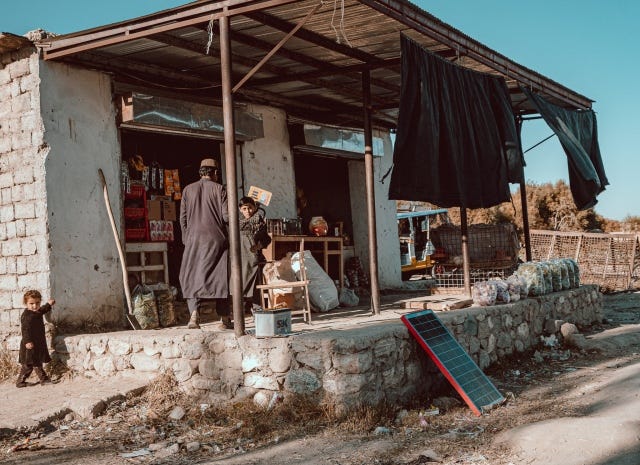
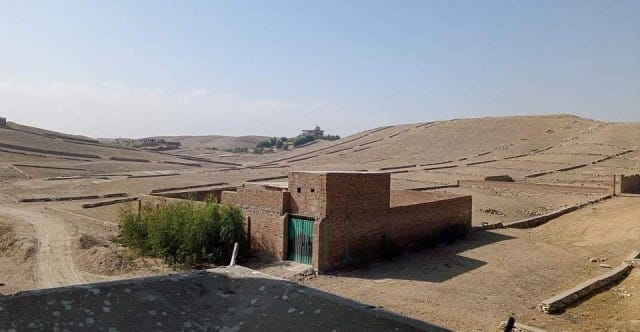
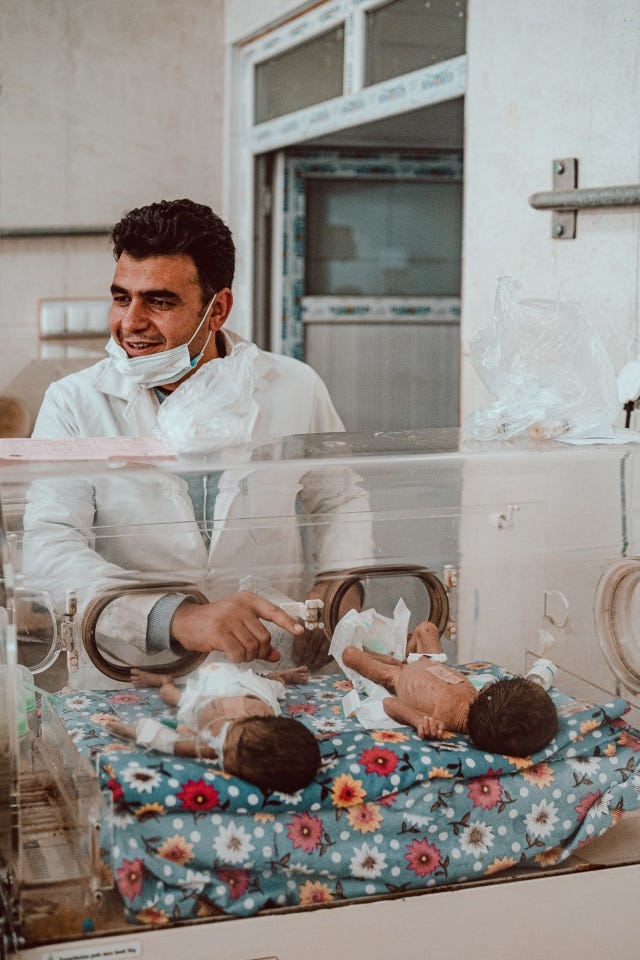
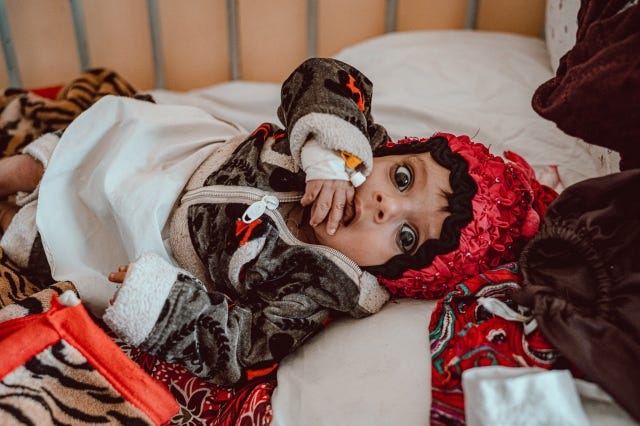



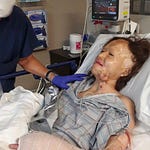




DISPATCHES FROM AFGHANISTAN: Inside the country’s ISIS-K stronghold, what happened after the U.S. bombed the house of the airport attack planner, and babies dying as medicine dries up